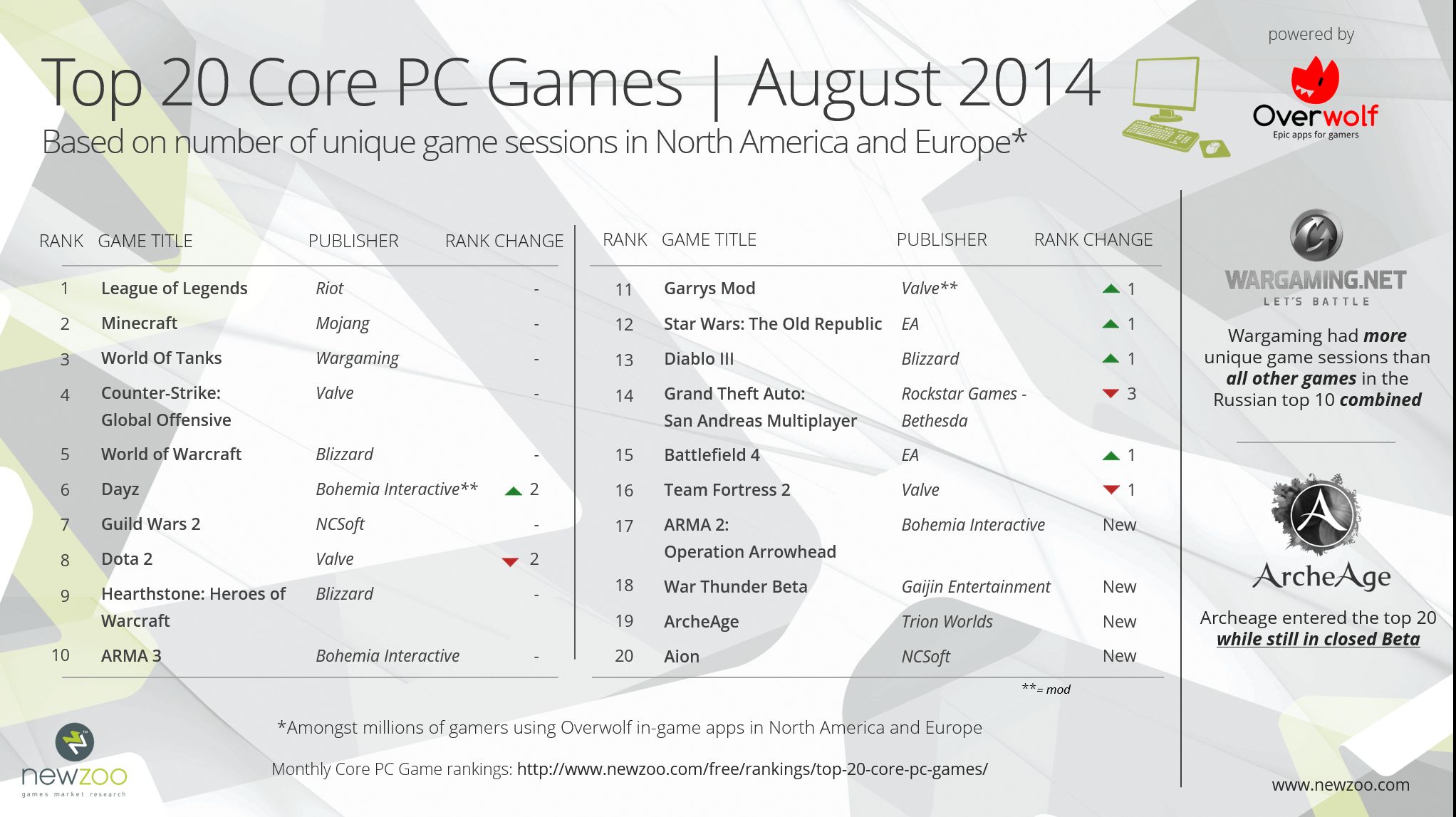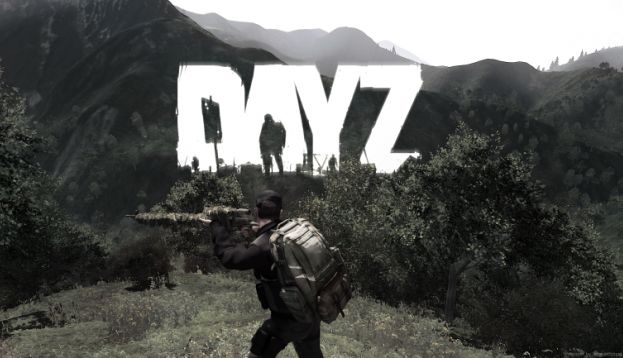In June 2014, Newzoo and Overwolf launched a new monthly ranking service that gives insight into the popularity of individual PC games in the US and Europe. The ranking is based on number of unique sessions during a calendar month amongst millions of game enthusiasts that use Overwolf’s in-game software.
The rankings for August 2014, especially in the Top 5, remain relatively unchanged from July 2014. Riot Games’s League of Legends stays unchallenged at #1, with indie developer Mojang’s Minecraft at the number 2 spot. Many might argue that Minecraft doesn’t qualify as a “core” PC title, but we see its players as part of the typical “enthusiast” group of gamers: they play their favorite game daily, have a high-end PC set-up and actively enhance their game experience using mods and add-on software. World of Tanks, Counter-Strike: Global Offensive and World of Warcraft maintain their hold on the third, fourth and fifth spots on the rankings respectively.

Mods and Beta Versions Moving Up
As we move down the rankings we start to see some significant changes. Bohemia Interactive’s Dayz, originally a mod of Arma 2, re-entering at position 17 this month, continues to grow in popularity. It jumped two spots to take the #6 position, knocking Valve’s DOTA 2 down to #8. At position 11, Garry’s Mod, originally based on Half Life 2, continues its climb towards the top 10. The success of mods is illustrative of a games market that is increasingly driven by gamers themselves. This trend is currently accelerated by the explosive growth of eSports in the West and platforms such as Twitch, that provide gamers the tools to create, broadcast and share their favourite games.
Rockstar Games’s Grand Theft Auto has dropped the furthest on the August rankings, settling at #14. Of particular interest is the (re-)entry of 4 titles on our Core PC Rankings: Arma 2, War Thunder Beta, Aion and ArcheAge. After having dropped out of the top 20, War Thunder, officially still in Beta, seems to have found its community of fans as it climbs back into the charts. ArcheAge is a notable entry having just started its open Beta last week, after the reporting period of the August charts. Arma 2 is the only pay-to-play title of these four, a clear indicator of the rising consumer acceptance of the free-to-play business model.
No Cold War for Minecraft
What the rankings obscure is the interesting contradictions between the US and Russian PC market. The Top 20 Core PC Games in Russia includes Allods Online, Warface and Aion, titles that are absent from the US rankings (except for Aion, which has crept into the #20 position in the US). Vice versa, we see titles like Elder Scrolls Online, Star Wars: The Old Republic and Team Fortress 2 doing well in the US, despite not featuring in the Russian charts. There are game titles however whose popularity transcends oceans. Minecraft, for example, is a very popular title in both the US (#1) and Russia (#4). Minecraft‘s popularity is extremely interesting when you consider ‘bigger’ games don’t always achieve the same success across borders. An example is League of Legends, the top “truly core” PC game in the US, ranking low in Russia. DOTA 2 is the MOBA game of choice for Russians and is ranked as the runner-up to the obvious #1, World of Tanks. In fact, the Wargaming title had more unique sessions than all other games in the Russian top 10 put together . . .
What unites both the US and Russia is the relative dominance of F2P powered games, MMO’s and Mods. This clearly indicates that while particular game tastes differ between the two countries, consumers from both sides are united by their continued embrace of the newer revenue models and game types.
Notes from [a]listdaily
It’s interesting to note how the games at the top of the list aren’t changing positions, which can be attributed to the longevity of the games and the dedication of the fan base. Being free-to-play helps, too, as players can stick with a game even if there’s nothing motivating them to buy something in a particular month. Continual drops of new content, a standard feature of the top games, keeps player interest high and encourages lapsed players to return to take a look at the new content.
In a couple of notable exceptions, Minecraft and World of Warcraft, the appeal isn’t due to new content appearing — at least, not from the publishers. In both cases, the appeal is derived from the players. Minecraft continues to enthrall due to what the players themselves are creating, or what they are watching other players create. With World of Warcraft, the appeal is the interaction with other players… and to some extent at this point, increasing anticipation over the new Warlords of Draenor expansion due to arrive soon.

